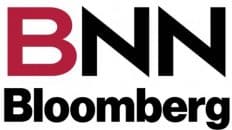Is there anything that can stop this runaway price train?
How high can gasoline and diesel prices go?
Base prices are set by global drivers, but the final pump or rack “out-of-my-pocket price” is guided, or some may say misguided, by self-nominated governmental visionaries who claim to know better than the vote wielding consumer. To make their case, they add a dazzling array of taxes to justify the end price – and their existence.
The consumer has no say in the pricing calculus unless we decide to shut down the demand side and just not buy the gasoline and diesel that the oil companies offer up. UP is the only direction for refined products for the coming 12 months.
As this year’s driving season gets closer and closer, the outlook for pump prices just gets higher and higher – and – further and further out of reach of the family budget.
Normally gasoline prices begin to increase mid-February, and peak mid-April, going into stability mode mid-June to Labour Day when prices begin to fall after the closeout of the high demand summer holiday season.
The schedule may be very different this year.
As has I have been mentioning in earlier reports, demand for all refined products is leaving supply in its dust. U.S. crude levels are now 10% below the 5-year average. There is little, if no hope, for supply relief from OPEC as only the Saudis and the UAE have spare crude production capacity, while the other 21 members of OPEC + can only shrug their shoulders.
When we add in the Russia/Ukraine situation, prices of crude move on headline risk factors where we have seen prices swing back and forth by $4/bbl in as little as 24 hours.
This seems to reflect the guesstimate of whether or not President Putin is just honing his skills on a game of Ukraine bait and switch, “should we invade or not invade? Hmmm let’s wait and see.”
Moving to the supply of gasoline and diesel. As mentioned in earlier reports, North America is in the middle of refinery turnarounds. In the past, when refined product supply dips, product is then imported from Europe. This year, there isn’t any indication that Europe is either willing, or able, to boost export supply. In fact, their inventory levels are in just as bad a state as in the U.S. This will mean that U.S. gasoline and diesel levels will fall into an even deeper hole.
But wait, it gets worse.
European refiners go into their maintenance period beginning in June. At that point they look to the U.S. for supply to top up their inventories. However, importing gasoline and diesel from the U.S. this year may not be on the table because there is too much domestic demand to allow for product to exported.
One might ask, “if demand and prices are so high, why not just increase refining capacity?” To which the answer is: if they could, they would, but they would have to reduce costs. The main culprits are the high cost of crude, and the natural gas needed in the refining process. To recoup these higher costs, they need higher refining margins, which ultimately means much higher prices for gasoline, diesel, and jet fuel.
This runaway price train isn’t even slowing to stop at the consumer’s station; and we can all just forget about it stopping there anytime soon.
– Roger McKnight – B.Sc., Senior Petroleum Analyst








Add comment